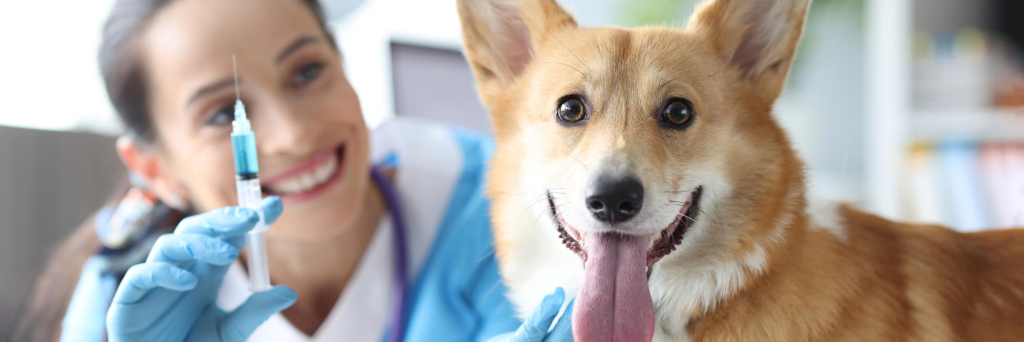In today’s fast-paced world, caring for our furry companions goes beyond the basics. With the rising costs of veterinary care, ensuring the well-being of our pets involves more than just cuddles and playtime.
Pet insurance has emerged as a practical solution, offering a safety net for unexpected medical expenses and providing peace of mind to pet owners. But is it worth it?
Let’s take a closer look at the ins and outs of pet insurance and explore how it can secure a worry-free future for your pet.
Importance of Pet Insurance
Pet insurance is a vital safety net for pet owners, providing financial protection for unexpected veterinary expenses. Pet owners need to consider the benefits of pet insurance in ensuring the well-being of their furry friends.
Just like humans, pets can fall ill unexpectedly, and the costs of regular vet visits, surgeries, medications, and tests can add up. With pet insurance, pet owners can afford the recommended course of treatments without financial worry. Veterinary care costs are rising, and pet insurance is a responsible choice, similar to health, car, and homeowners insurance.
It allows pet owners to protect their finances and ensure that their pets receive the necessary treatments for a long and healthy life. In the end, pet insurance provides peace of mind and financial security for both the pet and the pet owner.
Common Illnesses and Injuries
As we shift our focus to common illnesses and injuries, it’s important to recognize that just like human children, pets can experience unexpected health issues that may require costly veterinary care.
Signs of serious illness in pets, such as vomiting and diarrhea, should not be ignored as they can indicate underlying health problems.
Furthermore, chronic illnesses like allergies, diabetes, and cancer can result in significant veterinary expenses over time.
Additionally, accidents can lead to injuries like broken bones or lacerations, necessitating immediate and costly medical attention.
The cost of chronic illnesses and unexpected injuries can add up quickly, making pet insurance an essential consideration for responsible pet owners seeking to secure their pet’s health and their financial well-being.
Responsible Pet Ownership
Taking responsibility for your pet’s well-being includes making informed choices about their healthcare.
- Financial Responsibility
- The cost of veterinary care is rising, and pet insurance helps offset these expenses.
- Pet insurance ensures that pet owners can afford the best care for their furry friends.
- Preventative Care Benefits
- Regular vet check-ups and preventative treatments can help catch health issues early.
- Preventative care can save money by avoiding costly treatments for advanced illnesses.
Responsible pet ownership involves being prepared for the financial responsibilities of pet healthcare and understanding the benefits of preventative care. By making informed decisions about pet insurance and prioritizing regular check-ups, pet owners can ensure their pets receive the best care while managing the financial impact.

Financial Benefits of Pet Insurance
The financial benefits of pet insurance are evident in its ability to provide peace of mind and protect against unexpected veterinary expenses. Pet insurance offers cost effectiveness and advantages that can significantly impact the financial well-being of both the pet and the owner. Here’s a quick look at the benefits of pet insurance:
| Advantages | Cost Effectiveness |
|---|---|
| Reimbursement for vet bills | Provides immediate coverage |
| Protection against high vet costs | More affordable than saving for emergencies |
| Peace of mind for unexpected expenses | Ensures best veterinary care for pets |
Pet insurance not only helps in safeguarding against unforeseen expenses but also ensures that pets receive the necessary care without causing financial strain. It’s a smart and responsible choice for any pet owner looking to secure their pet’s health and their financial stability.
Pet Insurance Vs. Savings Account
Pet insurance offers immediate coverage for veterinary care, providing a valuable alternative to relying solely on a savings account for unexpected pet medical expenses.
Pros and Cons of Pet Insurance:
| Pros | Cons |
|---|---|
| Immediate coverage for veterinary care | Monthly premium payments |
| Reimbursement for a percentage of eligible treatment costs | Pre-existing conditions may not be covered |
Comparison with Other Insurance Options:
- Pet Insurance vs. Savings Account:
- Pet insurance provides immediate coverage, while a savings account may take years to save enough for a large vet bill
- Selecting a plan that reimburses a percentage of eligible treatment costs can make the best veterinary care more affordable
Conclusion
After weighing the pros and cons of pet insurance versus a savings account, it is evident that pet insurance provides immediate coverage for veterinary care, offering a valuable alternative to relying solely on a savings account for unexpected pet medical expenses.
| Pros of Pet Insurance | How to Choose the Right Pet Insurance Plan | Financial Protection |
|---|---|---|
| Immediate coverage | Research different plans and compare costs | Reimbursement |
| Peace of mind | Check coverage for regular check-ups | Affordability |
| Comprehensive care | Look for coverage of chronic conditions | Financial security |
When choosing the right pet insurance plan, consider the immediate coverage it provides, the peace of mind it offers, and the comprehensive care for your furry friend. Ensure the plan covers regular check-ups, chronic conditions, and provides financial security through reimbursement. Prioritize a plan that aligns with your pet’s needs and your budget to ensure their well-being.
Conclusion
In conclusion, pet insurance offers financial protection against unexpected veterinary expenses, ensuring that pets receive necessary care without causing financial strain.
It covers a wide range of treatments, regular check-ups, and chronic illnesses, providing peace of mind to pet owners.
Compared to traditional savings accounts, pet insurance offers practicality and long-term value, making it a valuable tool for responsible pet ownership.
